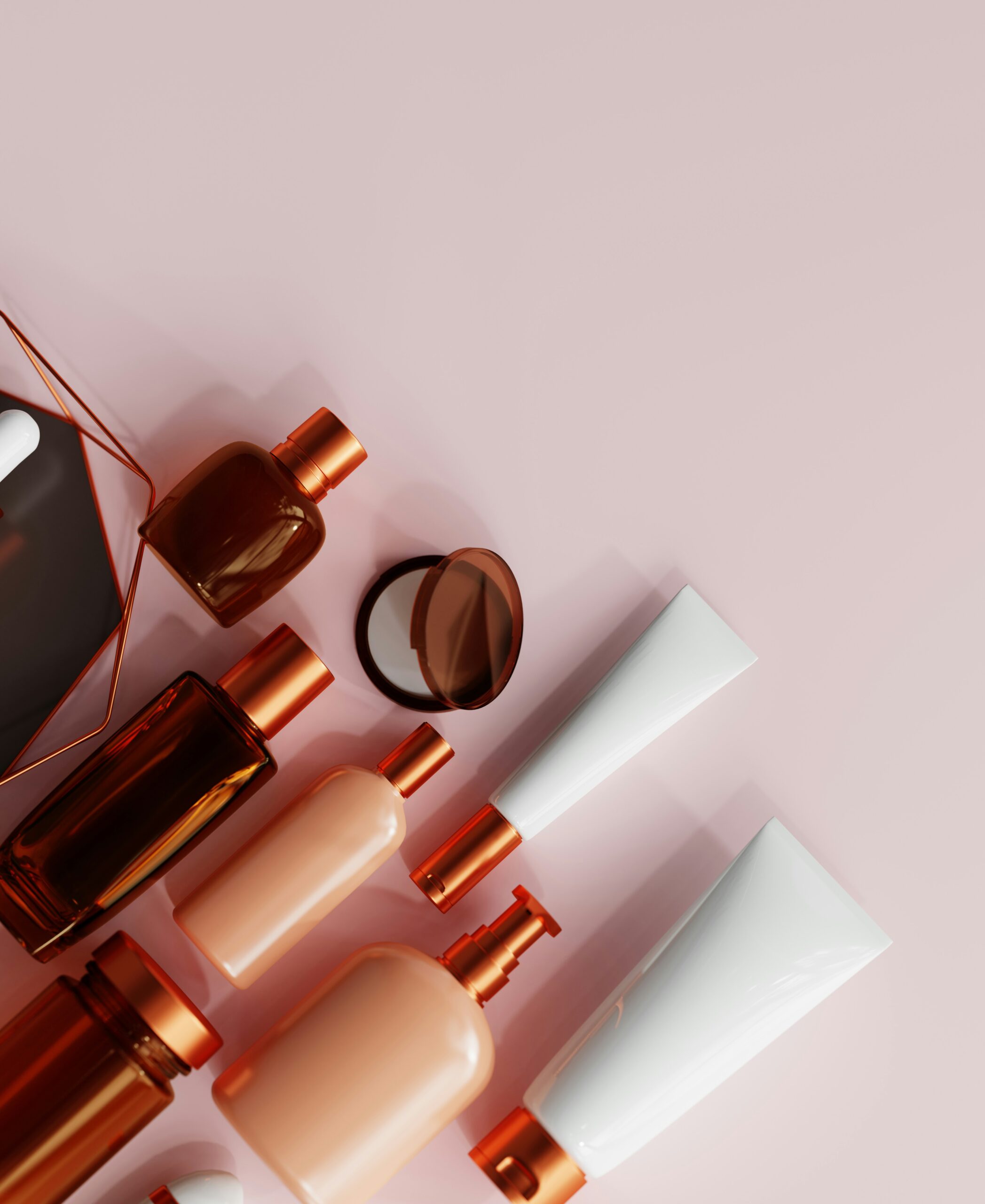

07
Jun
The Hidden Dangers in Beauty Products: A Holistic Health Perspective

As holistic health practitioners, we are deeply concerned about the beauty industry’s lack of awareness and ethical standards. Many companies prioritize profit over the well-being of their consumers, often including harmful chemicals in their products without proper disclosure. This negligence can seriously affect our health, affecting everything from the HPA axis to kidney and liver function.
Lack of Awareness and Ethical Standards
The beauty industry is rife with products containing potentially toxic ingredients. Unfortunately, many consumers are unaware of the risks associated with these chemicals. Companies often use marketing tactics to highlight the benefits of their products while downplaying or ignoring the potential dangers. This lack of transparency prevents consumers from making informed choices about the products they use daily.
Impact on the HPA Axis, Weight, Kidney, and Liver Function
The HPA axis (hypothalamic-pituitary-adrenal axis) plays a crucial role in regulating stress responses in the body. Exposure to toxic chemicals in beauty products can disrupt this delicate system, leading to chronic stress, hormonal imbalances, and weight gain. Additionally, the liver and kidneys, responsible for detoxifying the body, can become overburdened by the constant influx of harmful substances. This can result in reduced organ function and increased susceptibility to disease.
How to Spot Harmful Chemicals
Recognizing harmful chemicals in beauty products is essential for protecting your health. Here are some common toxic ingredients to watch out for:
- Unfiltered Water (Aqua)
- While not toxic, water is a common ingredient in beauty products and serves as a solvent.
- Parabens (e.g., Methylparaben, Propylparaben, Butylparaben, Ethylparaben)
- Used as preservatives, parabens can disrupt hormones and have been linked to breast cancer.
- Phthalates (e.g., Diethyl Phthalate, Dimethyl Phthalate)
- Often found in fragrances, phthalates can disrupt the endocrine system and are linked to reproductive issues.
- Sodium Lauryl Sulfate (SLS) and Sodium Laureth Sulfate (SLES)
- These surfactants can cause skin irritation and have been linked to more severe health issues due to contamination with 1,4-dioxane.
- Formaldehyde and Formaldehyde-releasing Preservatives (e.g., Quaternium-15, DMDM Hydantoin)
- Known carcinogens that can cause skin irritation and allergic reactions.
- Toluene
- Found in nail polish and hair dyes, toluene can affect the respiratory system, cause nausea, and is linked to reproductive harm.
- Triclosan and Triclocarban
- Antibacterial agents can contribute to antibiotic resistance and disrupt thyroid function.
- Polyethylene Glycols (PEGs)
- Used as thickeners, PEGs can be contaminated with ethylene oxide and 1,4-dioxane, both known carcinogens.
- Siloxanes (e.g., Cyclotetrasiloxane, Cyclopentasiloxane)
- Siloxanes are used to soften, smooth, and moisten, but they can disrupt the endocrine system and harm reproductive health.
- Retinyl Palmitate and Retinoic Acid (Vitamin A derivatives)
- Used in anti-aging products, these can speed up the development of skin tumors and lesions when exposed to sunlight.
- Petrolatum
- Used in moisturizers and hair products, it can be contaminated with polycyclic aromatic hydrocarbons (PAHs), which are linked to cancer.
- Synthetic Fragrances
- These can contain a multitude of undisclosed chemicals, including phthalates, and can cause allergies, skin irritation, and endocrine disruption.
- Oxybenzone
- Oxybenzone in sunscreens can disrupt hormones and cause allergic skin reactions.
- BHA and BHT (Butylated Hydroxyanisole and Butylated Hydroxytoluene)
- Used as preservatives, these can cause allergic reactions and are suspected carcinogens.
- Coal Tar Dyes (e.g., p-phenylenediamine)
- Found in hair dyes, these can cause cancer and skin irritation.
- DEA, MEA, and TEA (Diethanolamine, Monoethanolamine, and Triethanolamine)
- As emulsifiers and foaming agents, these can cause skin irritation and may form carcinogenic nitrosamines.
- Ethyl Alcohol
- While not inherently toxic, high concentrations can dry the skin and irritate it.
- Hydroquinone
- Used for skin lightening, hydroquinone can cause skin irritation and is linked to cancer.
- Phenoxyethanol
- A preservative that can cause skin irritation and central nervous system issues.
- Nanoparticles (e.g., Titanium Dioxide, Zinc Oxide)
- Nanoparticles can penetrate the skin and cause cellular damage in sunscreens and cosmetics.
Tools to Help Identify Safe Products
The Environmental Working Group (EWG) offers several valuable tools to help consumers make safer choices:
- EWG’s Skin DeEWG’satabase: This comprehensive database rates the safety of personal care products and their ingredients.
- EWG VERIFIED™ Mark: Products with this mark meet EWG’s strict EWG’sards for health and transparency.
- EWG’s HealthyEWG’sng App: This allows you to scan product barcodes and see their safety ratings instantly.
The Importance of Water Quality in Beauty Products
Water is a common ingredient in beauty products, but its quality matters significantly. Many water sources contain contaminants such as medications, drugs, and toxins that can exacerbate the harmful effects of other ingredients. It is essential to choose products that use purified or distilled water to minimize these risks.
Conclusion
As consumers, it is crucial to be vigilant about the products we use on our bodies. By educating ourselves about harmful ingredients and utilizing tools like those provided by the EWG, we can make safer, more informed choices. Remember, the quality of what we put on our skin is just as important as what we put in our bodies. Prioritizing products with high ethical standards and safe ingredients is a vital step towards maintaining overall health and well-being.
Stay informed, stay safe, and choose wisely for a healthier you.
For more information on safe beauty products and holistic health tips, feel free to reach out!
Together, we can make informed decisions that support our health and the environment.
